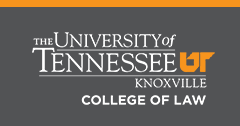Abstract
Over the last decade or so, federal and state education policymakers embraced the use of value-added models (VAMs) to evaluate teachers' performance and make high-stakes employment decisions (e.g. tenure, merit pay, termination of employment). VAMs are complicated statistical models that attempt to estimate a teacher's contribution to student test scores, particularly those in mathematics and reading. Educational researchers, as well as many teachers and unions, however, have objected to the use of VAMs noting that these models fail to adequately account for variables outside of teachers' control that contribute to a student's education performance. Subsequently, many teachers challenged the use of VAMs through the courts. This articles assesses those challenges.
Recommended Citation
Paige, Mark; Beardsley, Audrey Amrein; and Close, Kevin
(2021)
"Tennessee's National Impact on Teacher Evaluation Law & Policy: An Assessment of Value-Added Model Litigation,"
Tennessee Journal of Law and Policy: Vol. 13:
Iss.
2, Article 3.
DOI: https://doi.org/10.70658/1940-4131.1007
Available at:
https://ir.law.utk.edu/tjlp/vol13/iss2/3
